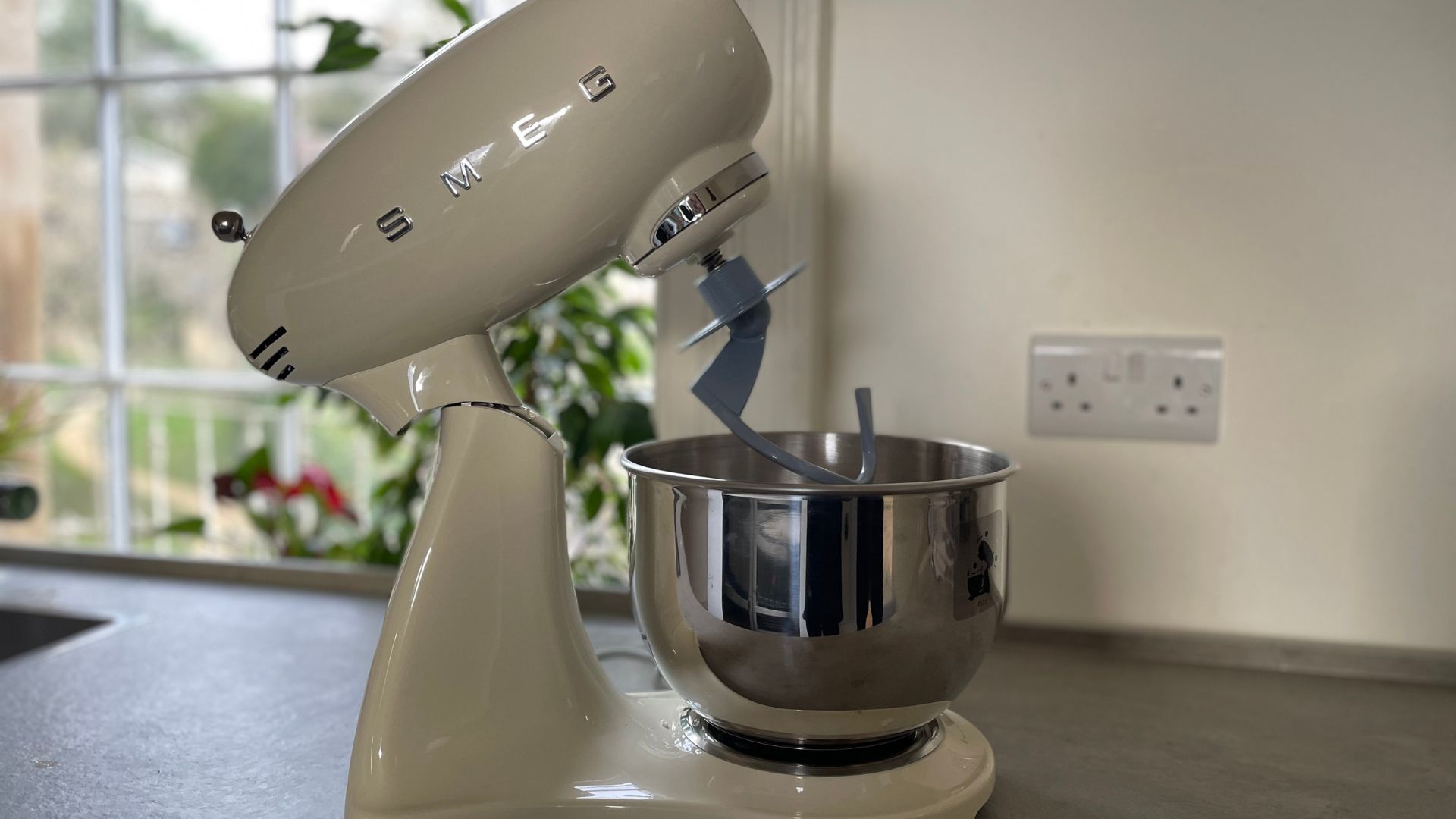
If anyone is going to make a beautiful stand mixer, it’s going to be Smeg. Their covetable curves and retro design are the signature of any style-conscious kitchen. So, the fact that this is attractive is a given, but is it as good in practice?
The best stand mixers are no strangers to impressive designs. KitchenAid, Smeg, Sage, and lots of big brands have designed some technically and aesthetically flawless baking assistants. And, they have to be, don't they? These are big appliances to commit to and you'll want yours to look good.
Smeg's stand mixer has been at the top of my wish list for years. I've admired it from afar, but now I've had the opportunity to get hands on with this stand mixer celebrity. I've used it to whip cream, knead bread, and make a sensational chocolate cake — if I may say so myself. I've actually even taken their ice cream maker for a spin (or should I say churn?) too.
Specifications
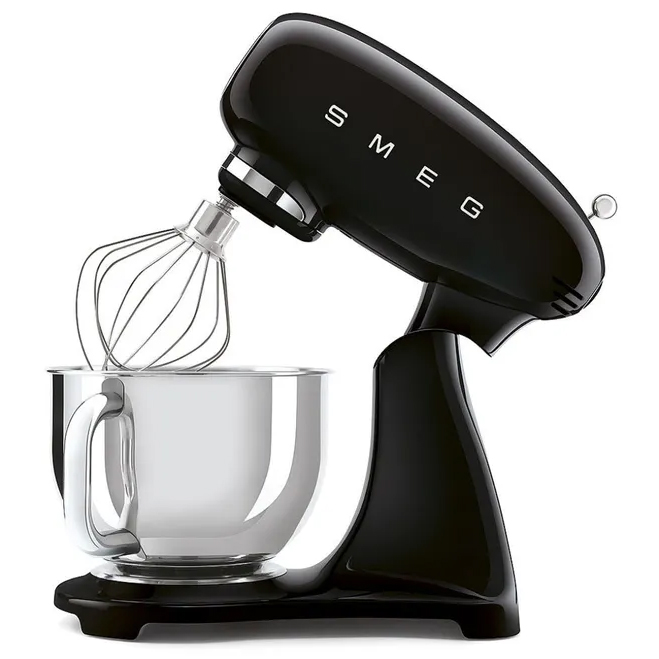
Unboxing
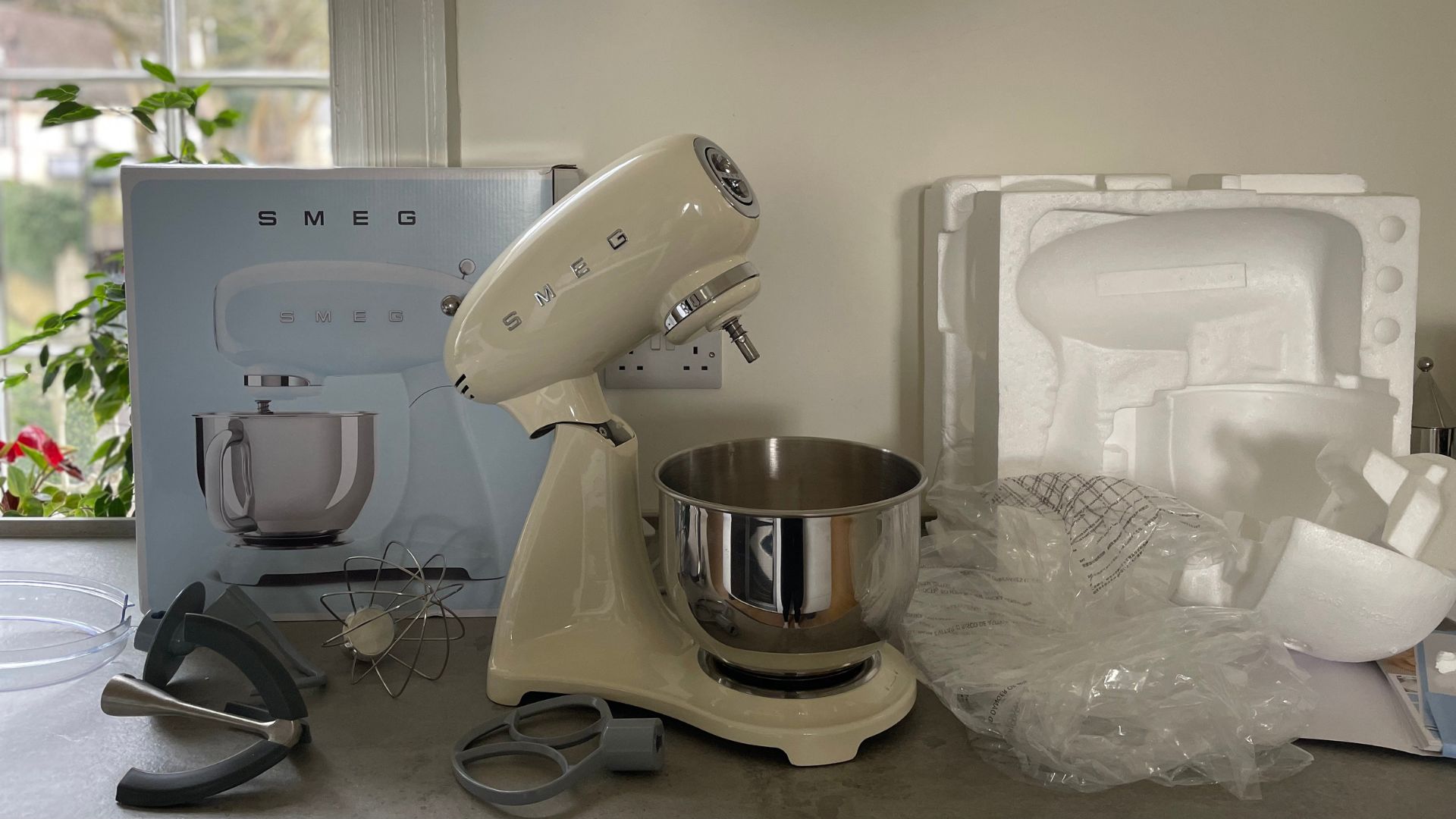
Unboxing this was a true treat. Perfect is the only word I'd use to describe how this looks. Smeg hasn’t missed the mark on design — I tested this in cream and loved it, but I’m sure that I would have been just as impressed in baby blue, soft mint, or that pretty pink that I dream of. It feels like it should have a spotlight and a pedestal. I've admired these in plenty of kitchens before and I'll keep admiring them. Smeg's stand mixer really is the most beautiful of them all.
The only downside of the unboxing was from a sustainability perspective. Stand mixers are behind the trend when it comes to sustainable packaging, so I wasn’t surprised that this comes with a fair bit of polystyrene and soft plastic. It doesn’t make for feel-good disposal, but it keeps the stand mixer in perfect condition.
Who would it suit?
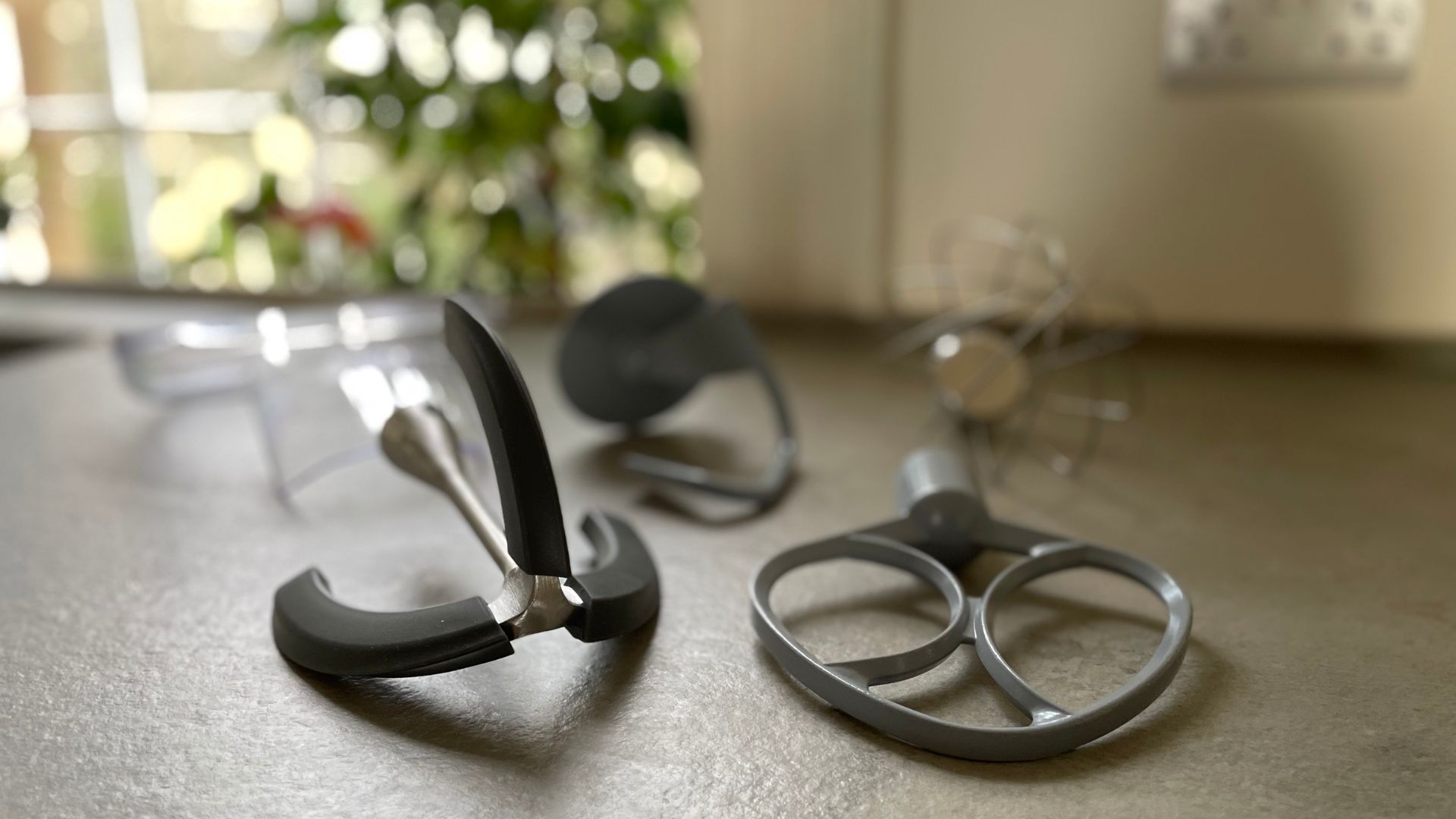
As always, Smeg’s premium price tag and pretty aesthetic appeals to the style conscious. There’s a premium to pay for having appliances that look this good and, if that’s the way your cookie likes to crumble, Smeg is where to spend your money. In the time that I used this, it looked fabulous. I have a friend who has used the Smeg stand mixer for years and it still looks just as good on her counter as it did on day one.
The bowl is relatively light and operation is easy. The tilt head isn’t too heavy, which, paired with the handle, makes for a very comfortable, wrist-friendly baking experience.
The range of speed settings and different accessories are useful for beginners right through to more ambitious bakers. Of course, the 4.8-litre capacity will cap you at about two loaves of bread and 32 cupcakes, but it’s rare that you need to tackle more than that in one sitting. I could see this sitting right at the heart of a (very trendy) family home.
What is it like to use?
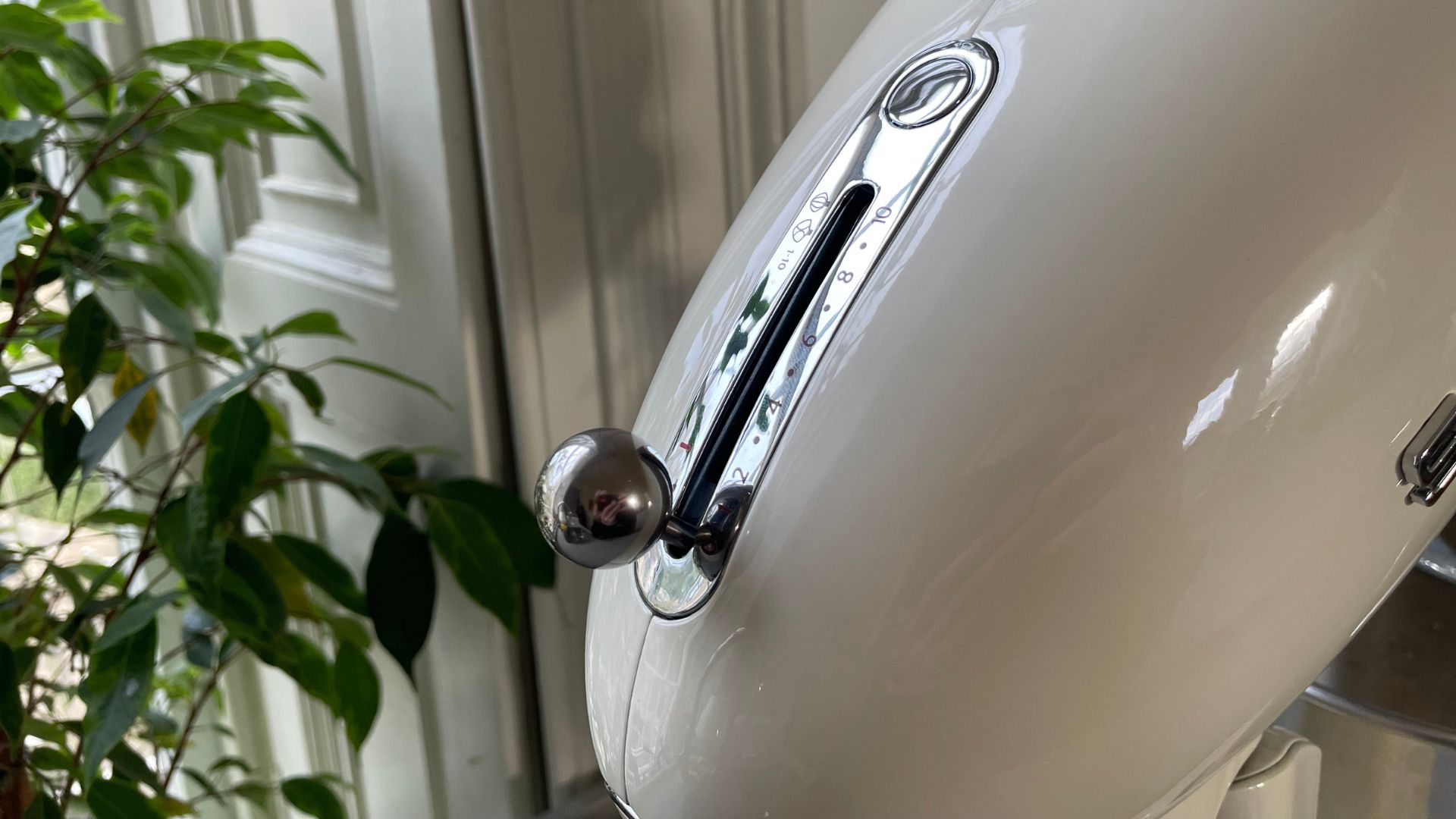
The Smeg works as most stand mixers do. There’s a simple button at the back that you press to unlock the head of the stand mixer, which then tilts back and lifts the accessory part of the stand mixer up. The bowl twists out of place — you’ll want a good grip on the handle to do this — and then there’s a lever that takes you through ten different speed settings. There are handy icons beside the speed settings (the tenth shows a whisk for whipping cream), which is a nice touch, especially for those who don’t often bake. All the levers and buttons feel well made, so I’m confident that this is a stand mixer made to stand the test of time.
Test 1: cake
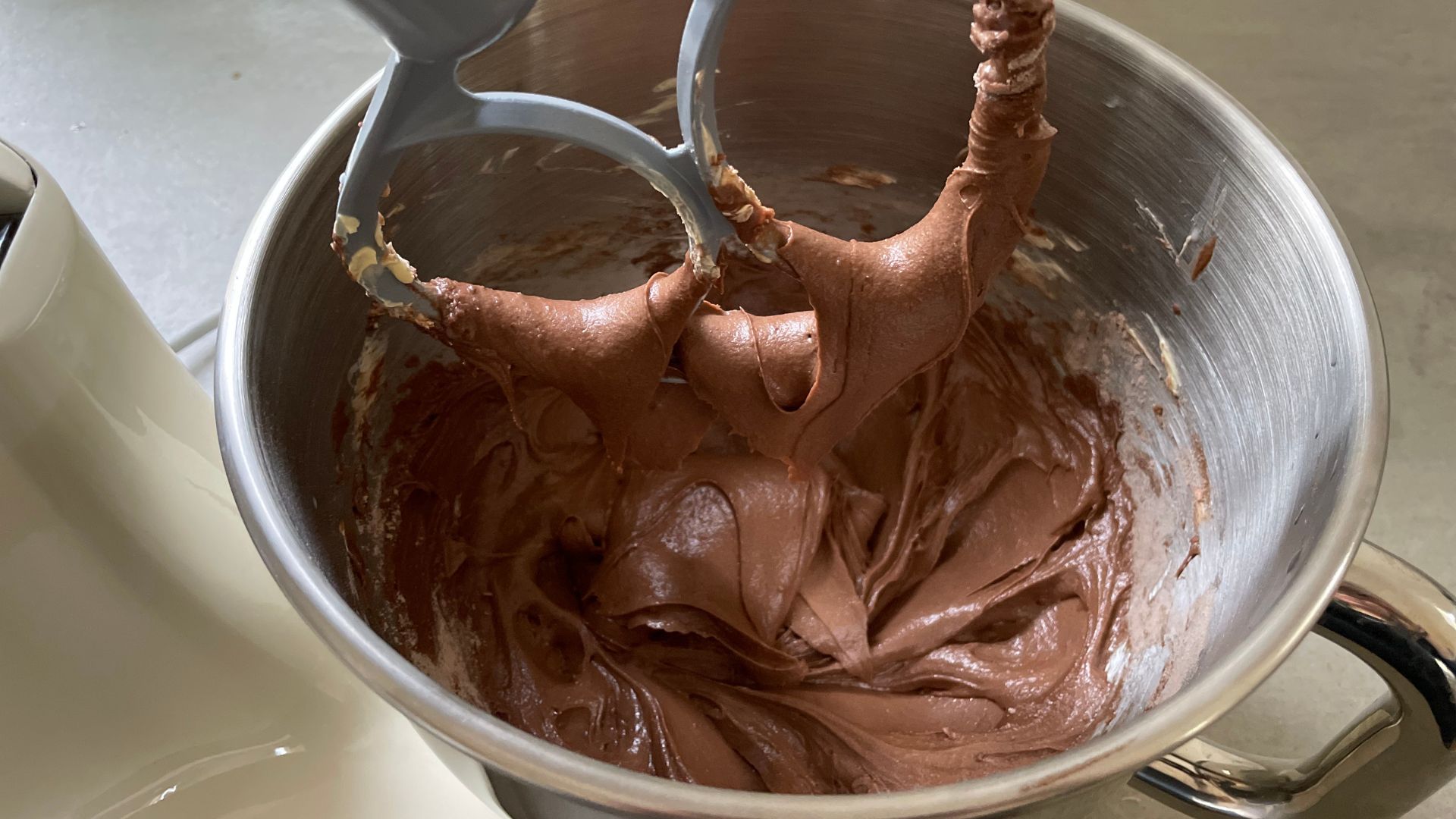
I’ve run two tests on making cake in the Smeg stand mixer and you’re about to find out why. The first method I followed was the ‘all in one’ method, where you pop all the ingredients into the bowl and mix. Whilst my cake mixture looked great from the top, when I went to pour my mix into a tin, I spotted a scattering of flour and cocoa powder, as you can see. Clearly, the mixer struggled to reach right to the bottom when I had a range of different consistencies.
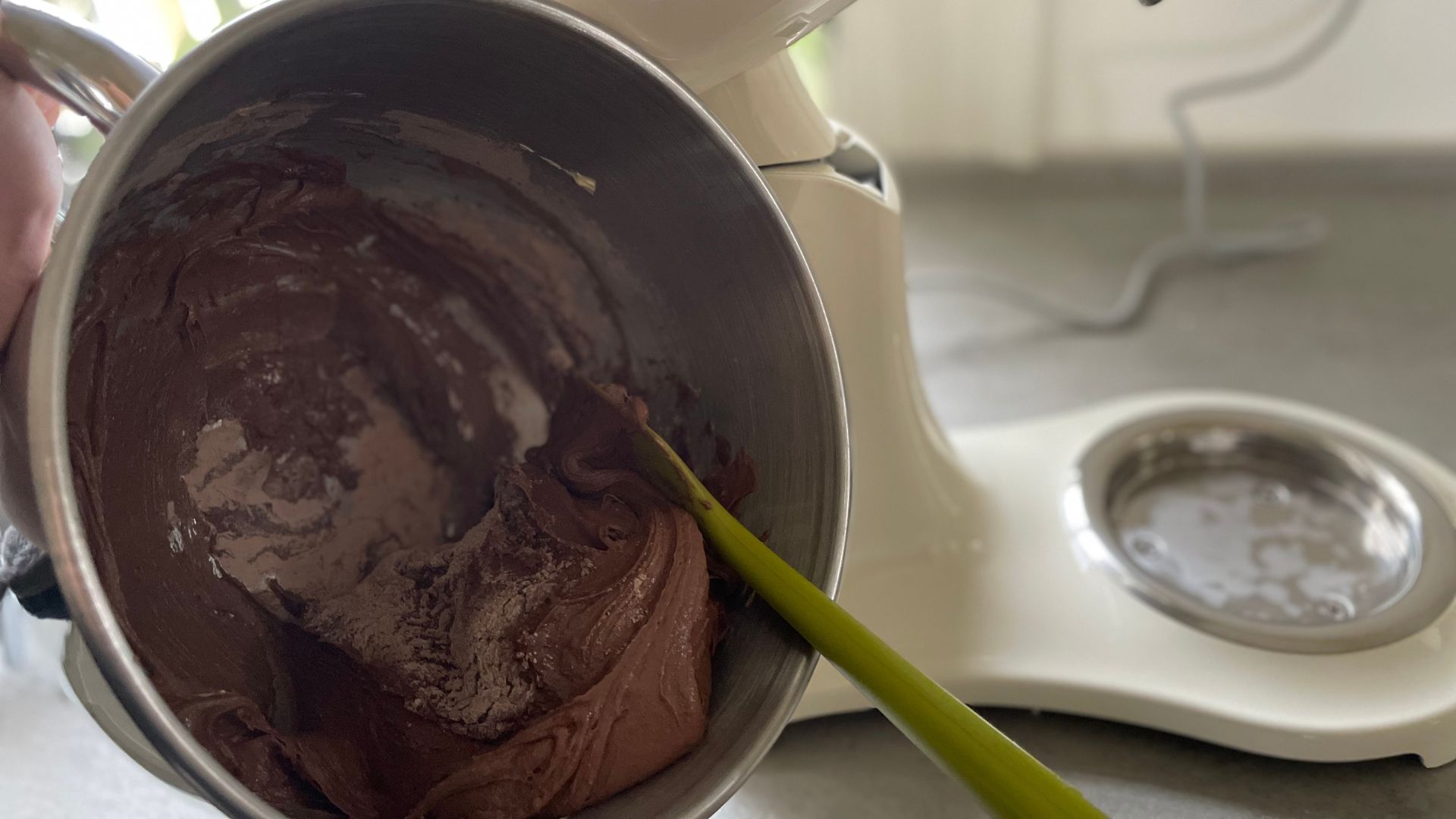
With this in mind, I changed methods on my second attempt. I started by creaming my butter and sugar together, then added in the dry ingredients gradually. Funnily enough, the mixer didn’t struggle to pick up the butter and sugar from the bottom. It mixed all the parts of the cake together really nicely. It’s a good lesson to know before you buy the Smeg stand mixer: always start with your wet ingredients. I can also appreciate, that it's not ideal to have to follow a set method when you’re spending this much money. The choice is up to you.
Test 2: bread
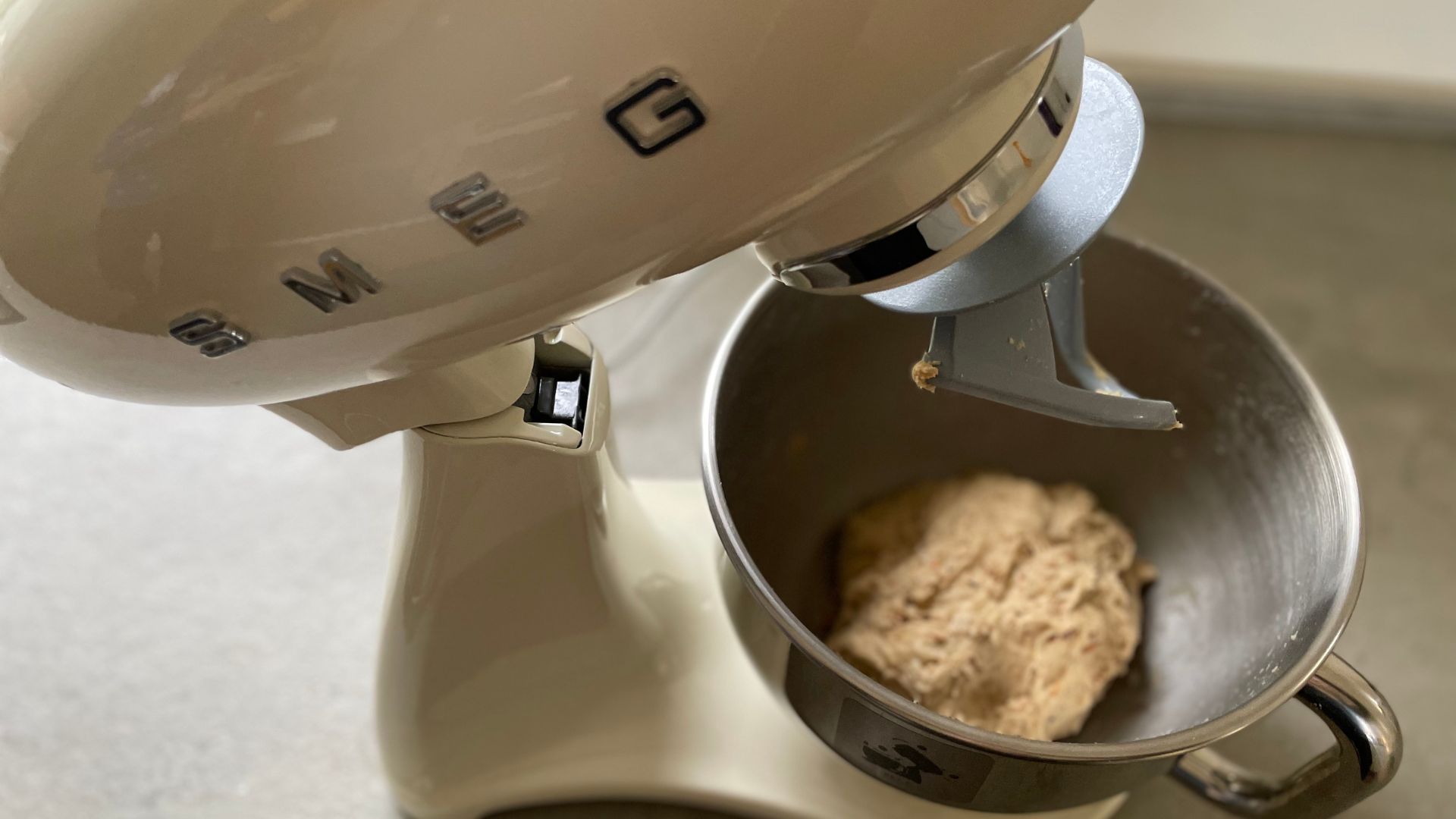
My next test is making a loaf of bread. I quite literally grew up making bread by hand, so I would back myself to do a better job by hand in a relatively similar amount of time to most stand mixers, which is why this is always a nail-biting test.
I simply added my flour, yeast, salt, warm water, and oil to the bowl. I was eager to see whether the dough hook would suffer from the same hitch as the mixer and — good news — it didn’t. In four and a half minutes, you can see that this brought together a really soft, elastic dough. It’s great.
The dough itself did start to form a strange, longer sausage shape that kind of slapped around the dough hook towards the end of the test, which I had never seen before. However, it nonetheless delivered great results. I gave this a knead by hand on the surface and I couldn’t fault it. The sides of the bowl were clean too. And, if you fast forward four hours, I nearly devoured the whole loaf that I made in one sitting. The crumb and rise were top-tier, even if I do say so myself.
Test 3: whipped cream
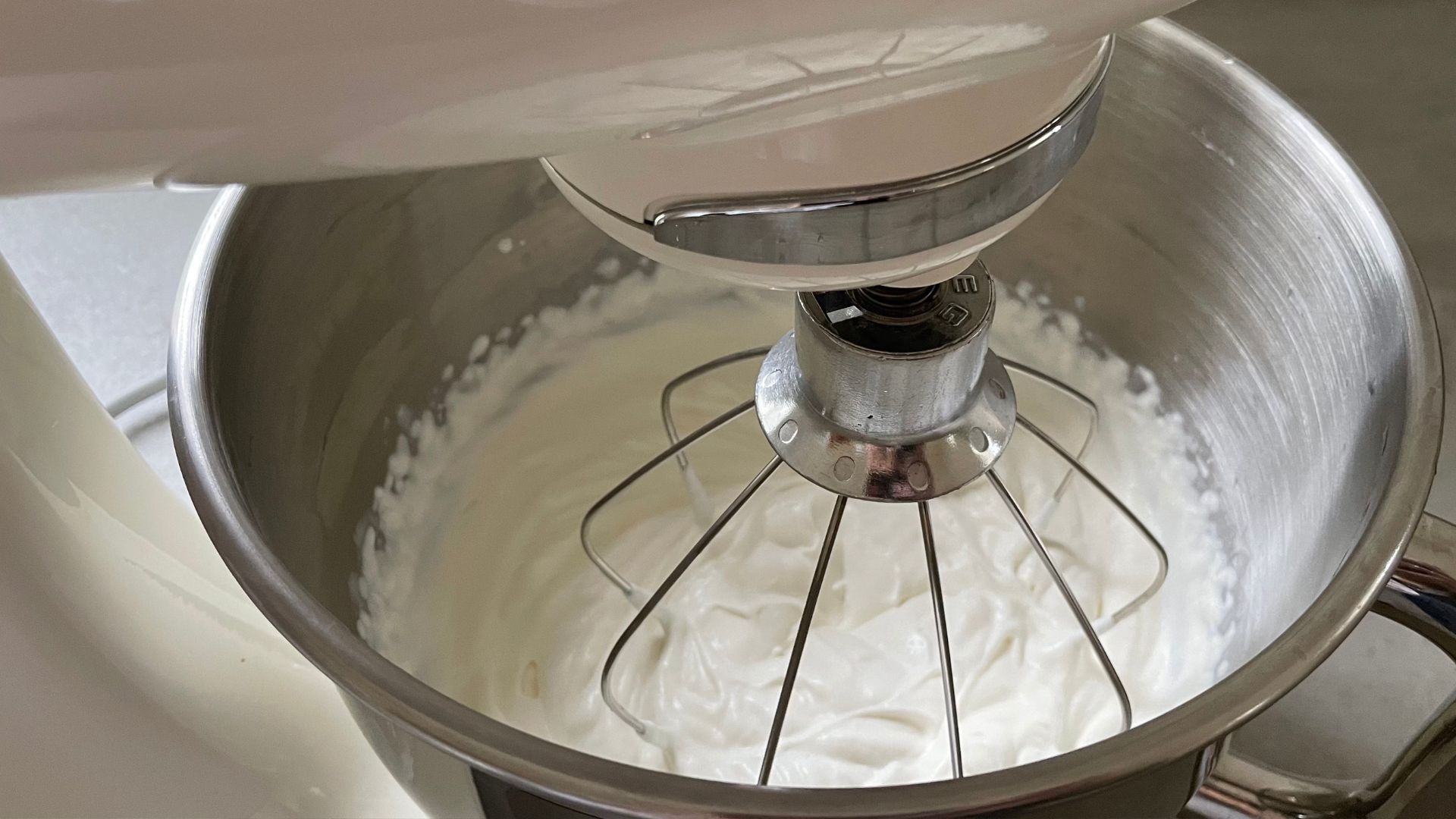
The last test we go through is whipping cream. I poured a pot of cream into the bowl and set the whisk running. I didn’t go full pelt initially, instead, I stuck it on five whilst I rinsed and recycled the cream pot. To my shock, when I came back just a minute later, the cream was already looking thick. I cranked it up to ten and the whisk spun round in an almost cartoon blur. It made some noise, but no more than a hair dryer and it delivered me stiff peaks of smooth cream about thirty seconds later. I even tested this with more temperamental vegan cream and the results were just as good.
Cleaning
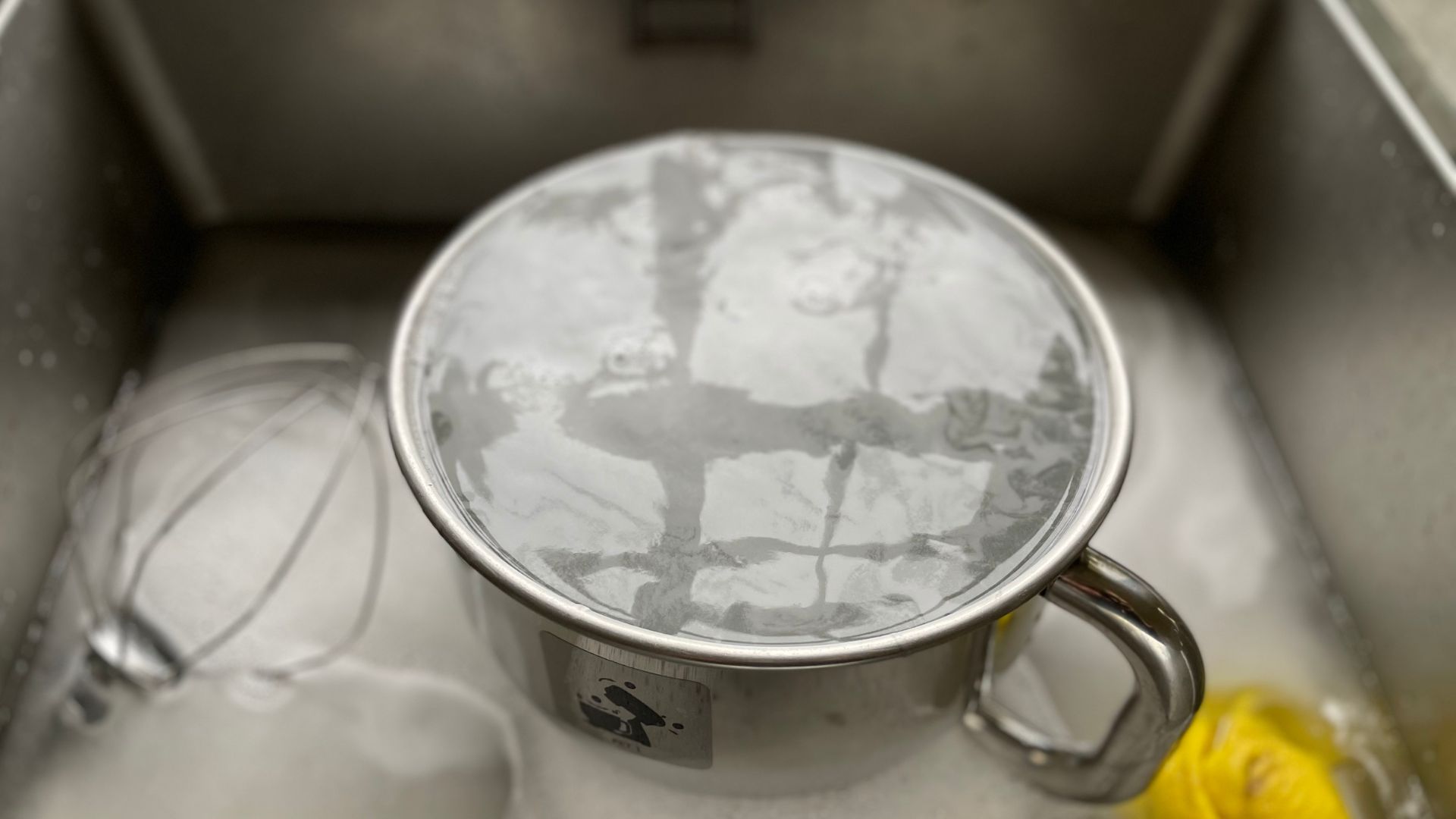
The bowl and some of the Smeg stand mixer accessories are dishwasher-safe, so you can pop them all away and leave your machine to do the hard work. I think it's always better to hand wash them if you want your stand mixer to last a long time. I'd recommend using Ecover or Method washing-up liquid because they'll be gentle on the accessories and your bowl. You'll also want to give it a wipe down after use to keep it sparkling clean.
How does it compare?
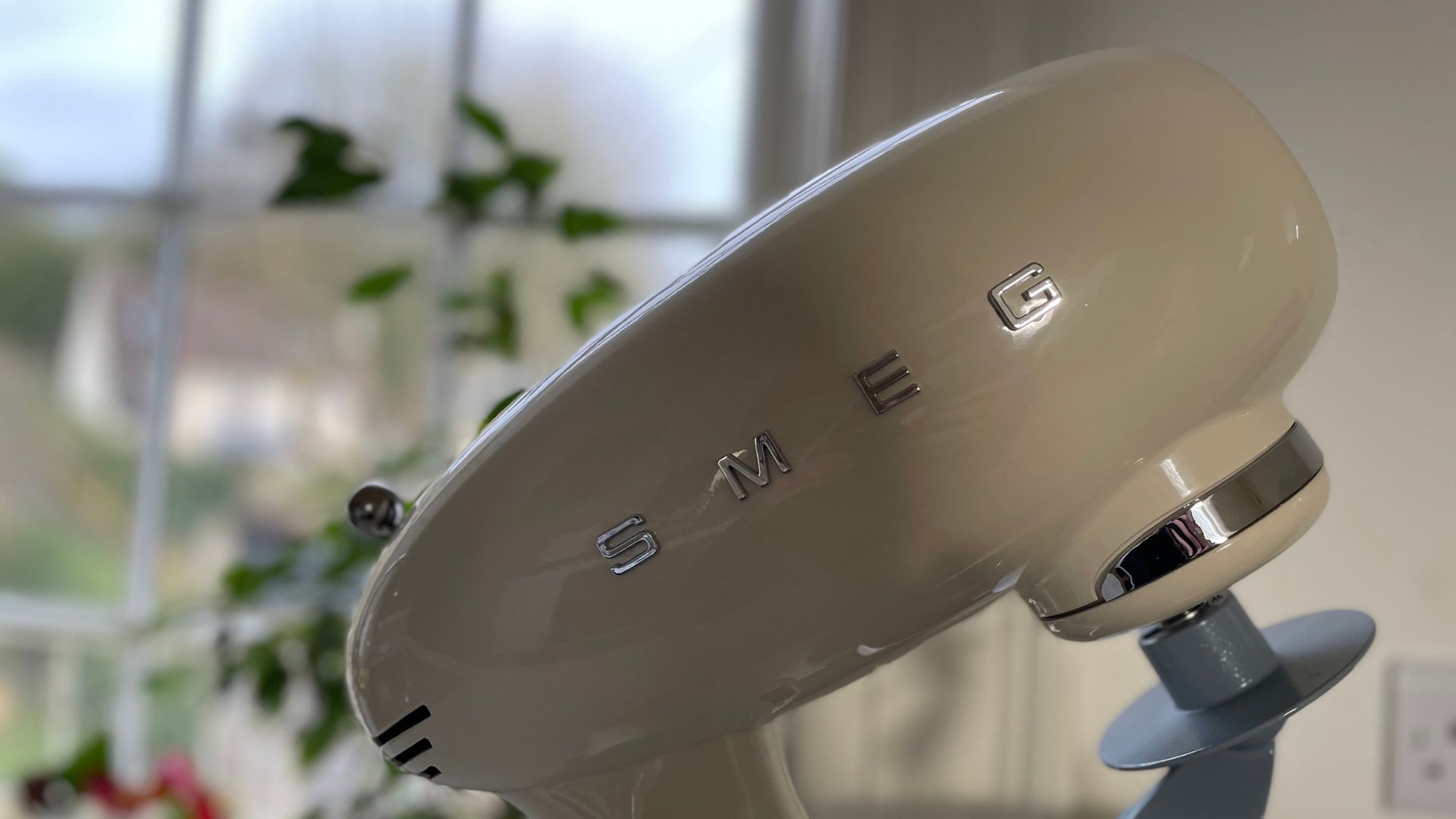
The Smeg Stand Mixer is around the same price as an entry-level KitchenAid, so it makes the most sense to compare the two. If you bought a tilt-head stand mixer from KitchenAid, you'd get an almost identical capacity, similar colour range, and comparable range of speed settings. Smeg sends the extra flex-edge beater, but I found that KitchenAid was actually more thorough at mixing my ingredients, especially my cake mix.
The aesthetics are also a little different. Smeg is more retro and, arguably, more attractive. So, if you're looking for a pretty stand mixer and you don't need baker-quality results, this is perfect. If you want a more robust and technical stand mixer, go for the KitchenAid. And, if you want a really really attractive KitchenAid (and you've got a bit more money, take a look at KitchenAid's limited-edition stand mixer. I've never seen anything like it).
Should you buy it?
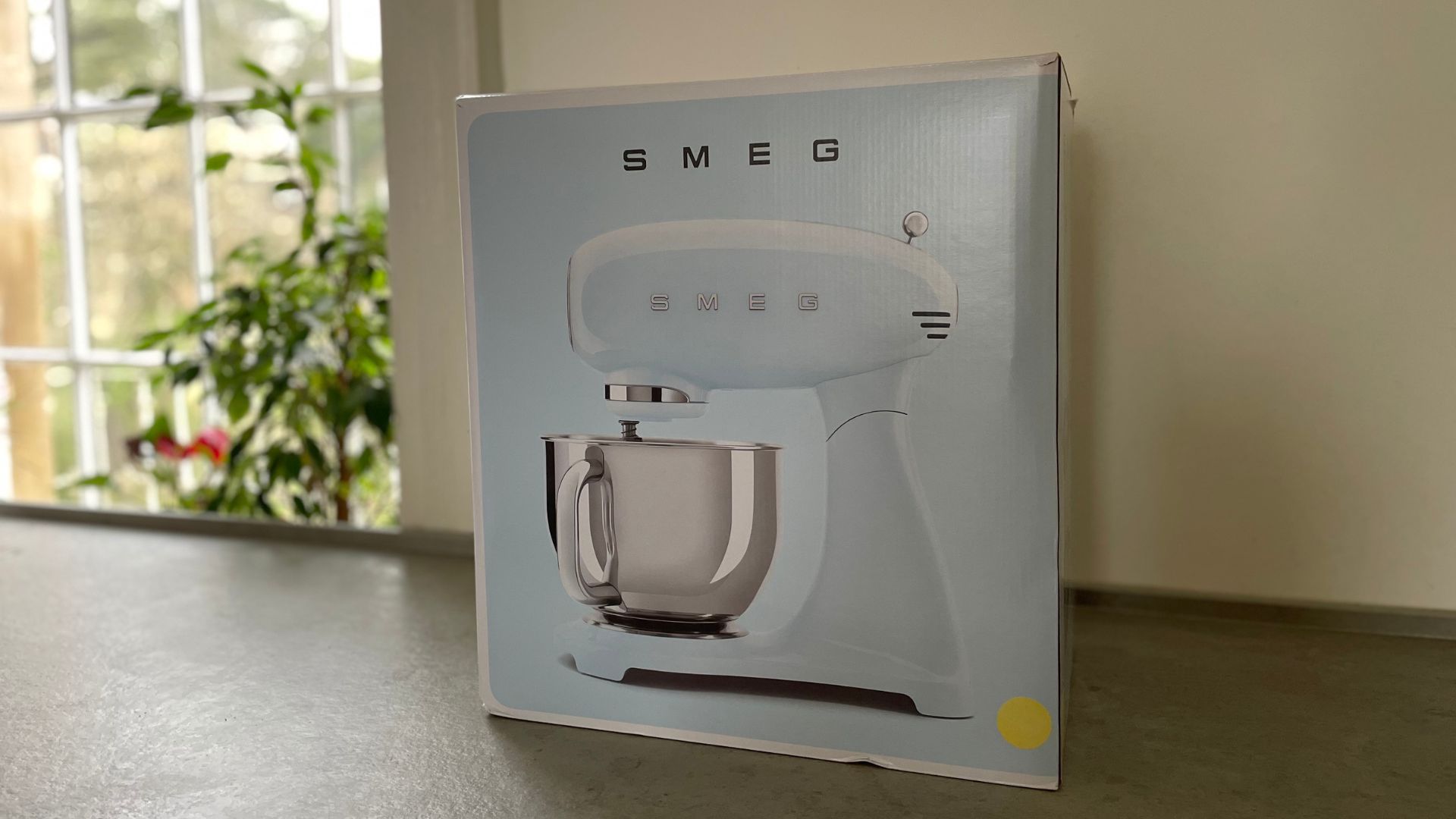
If you want to make a style statement in your kitchen, this is the way to do it. The Smeg Stand Mixer is more than just a pretty base station, it's a deft, versatile baking assistant. If I had the money, I'd splurge on it.








